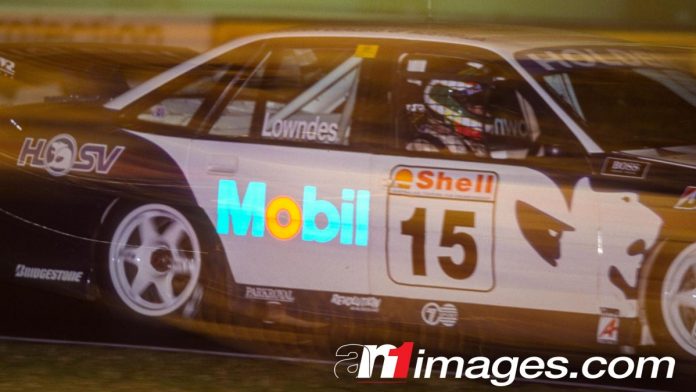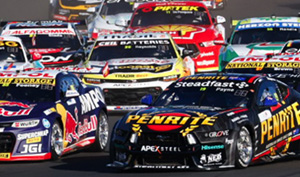JANUARY 27, 1996 marked a turning point in the history of Australian touring car racing.
That was the day that Craig Lowndes made his championship race debut for the Holden Racing Team, winning two out of three races at Eastern Creek to win his maiden round overall.
Lowndes had already marked himself as a promising talent with his bold pass on John Bowe to snatch the lead late in the 1994 Tooheys 1000, before taking pole position for the Sandown and Bathurst enduros a year later.
The then 21-year-old narrowly lost the opening sprint at Eastern Creek to Bowe, but won the start to the second and led every lap to claim his first ATCC race win. A repeat dose in the final race of the round was more than enough to secure the round victory.
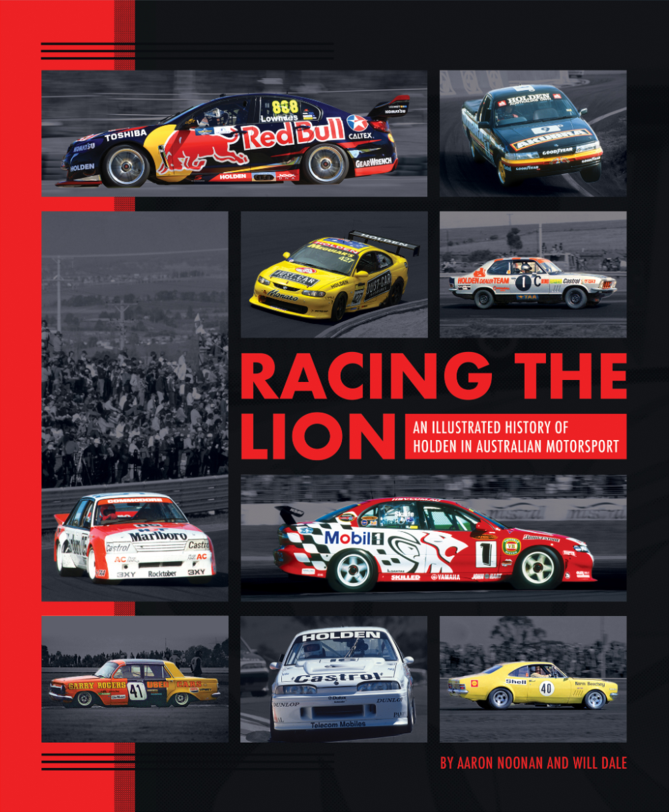
His success prefaced a year where Lowndes and HRT swept all before them – claiming the triple crown of the ATCC, Sandown 500 and Bathurst 1000 – and set in motion a revolution of team owners recruiting young drivers in the hope of replicating the factory Holden squad’s success.
The triple triumphs for ‘the General’ are all covered in our book Racing the Lion: An Illustrated History of Holden in Australian Motorsport.
The 400-page hardcover book pays tribute to the marque’s rich competition history, which spans over seven decades.
It’s now in stock in the V8 Sleuth Bookshop – click HERE to order!
However, while Lowndes’ stunning debut remains the most memorable aspect of that January day, there was a lot else going on…
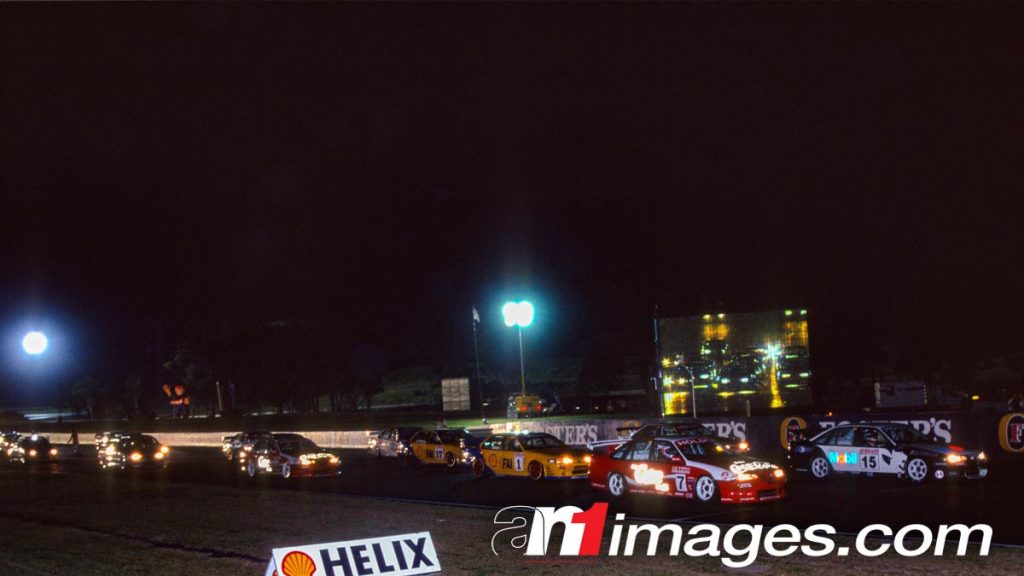
SATURDAY NIGHT SHORT TRACK ACTION
The third and final race of the round was held after sunset, with floodlights illuminating Eastern Creek’s short layout.
It wasn’t a new concept for circuit racing in Australia; the Peter Brock Classic meeting at Calder had featured touring cars racing under lights the previous November, and the Australian Super Touring Championship had held a round under lights at the same venue a few months earlier.
However, the Eastern Creek race marked the first time an ATCC/Supercars Championship race had been held under lights since 1980 – again at Calder!
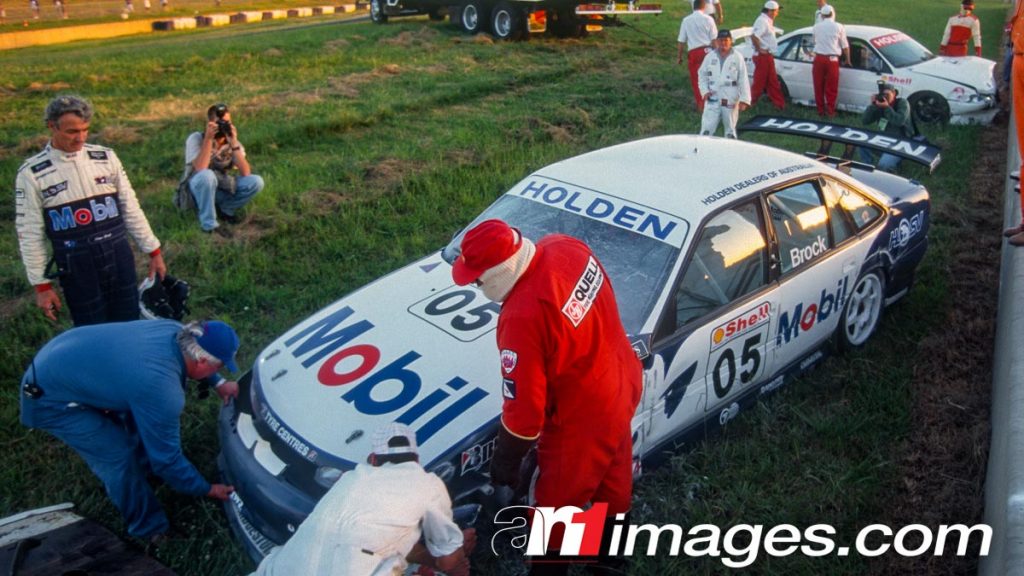
BROCK SEEMED HRT’S LIKELY WINNER, UNTIL…
A HRT car led the first nine laps of the opening race, but it wasn’t Lowndes’ #15.
Peter Brock blazed off the front row to beat pole man Bowe into turn one, and the #05 Commodore eased into a comfortable lead … until the half-way point.
A gentle spin at Turn 2 dropped him down the order; he’d eventually take the chequered flag in fifth place.
Worse was to come in Race 2: an early tangle with Mark Skaife put both drivers out for the rest of the day.
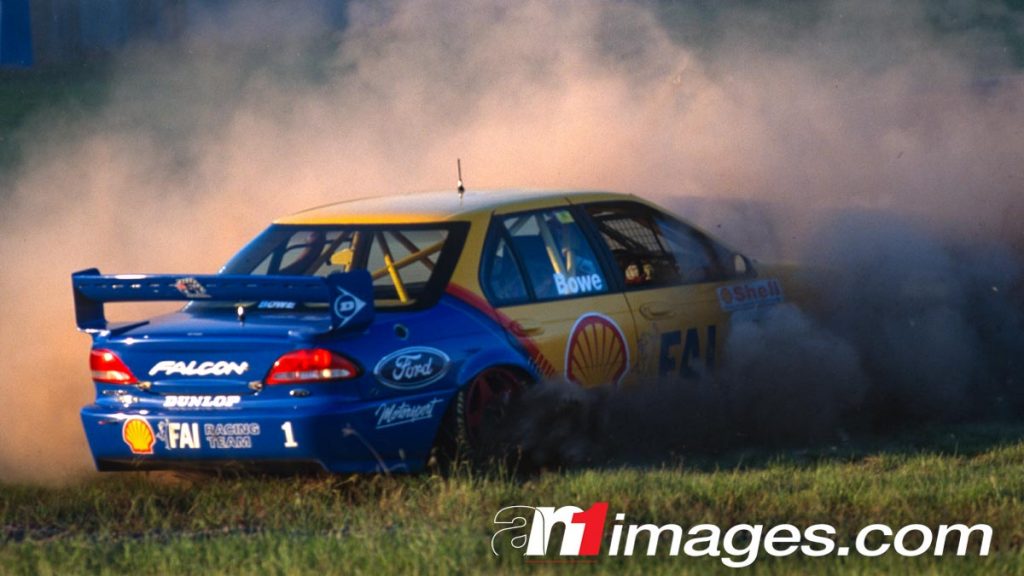
REIGNING CHAMP’S BRAKE ACHES
Defending series champion Bowe used every play in his legendary defensive driving playbook to hold Lowndes off in Race 1, but puffs of dust out of the #1 Falcon’s front brakes were a portent of problems to come.
Brake problems led to nearly identical spins at Turn 2 in both Race 2 and Race 3, the latter ending in contact that caused damaged that led to his retirement with overheating.
Despite the non-finish, Bowe managed to salvage a podium finish from the evening after another rival’s late-race disaster.
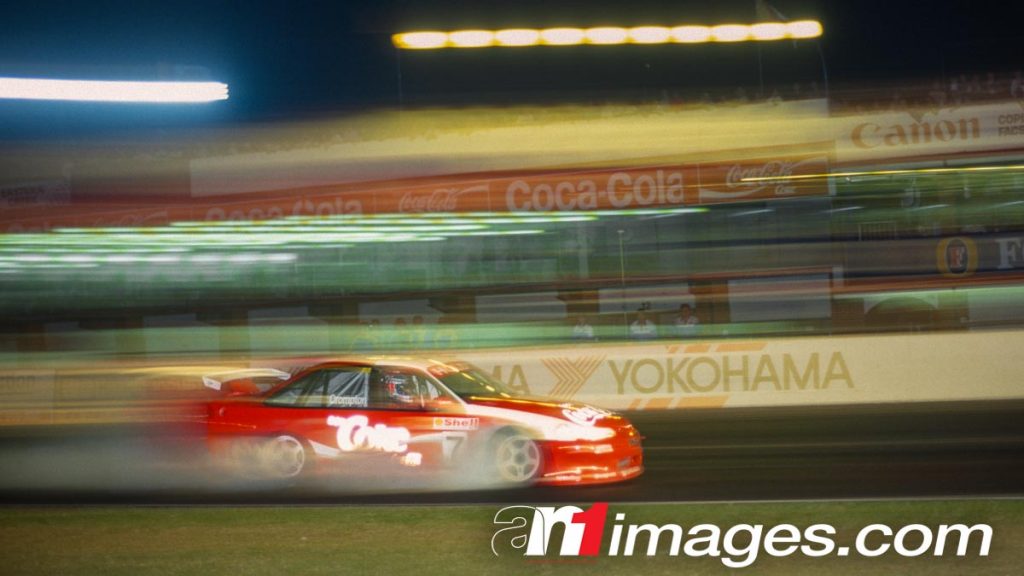
CROMPTON’S LATE HEARTBREAK
Neil Crompton finished second to Lowndes in Race 2 and, despite being overhauled by teammate and boss Wayne Gardner, was on track to claim the second podium finish of his ATCC career.
However, a puncture on the penultimate tour saw him limp home in 15th, the last car on the lead lap.
The 14 points for third place would have been enough to secure third place overall for the round behind Gardner, a result that would have been Wayne Gardner Racing’s first double-podium finish.
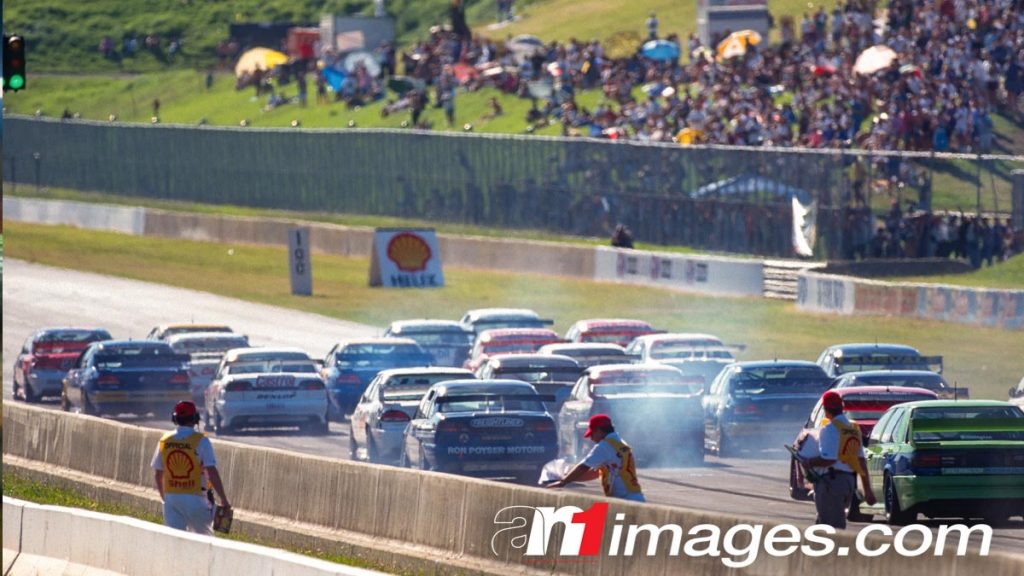
NEW FORMAT, NEW RULES
After three seasons where each ATCC round was run to a two-race format, 1996 ushered in the era of three races per meeting.
The format remained in place for the championship’s core ‘sprint’ rounds for the next few years.
Tyre allocations also changed, with teams able to use only two sets of tyres for qualifying and racing, down from three sets.
The change placed an even greater premium on rubber durability; Bridgestone held an edge over rivals Dunlop and Yokohama, while the season later saw American tyre manufacturer Hoosier tip its toe into Australian touring car racing.
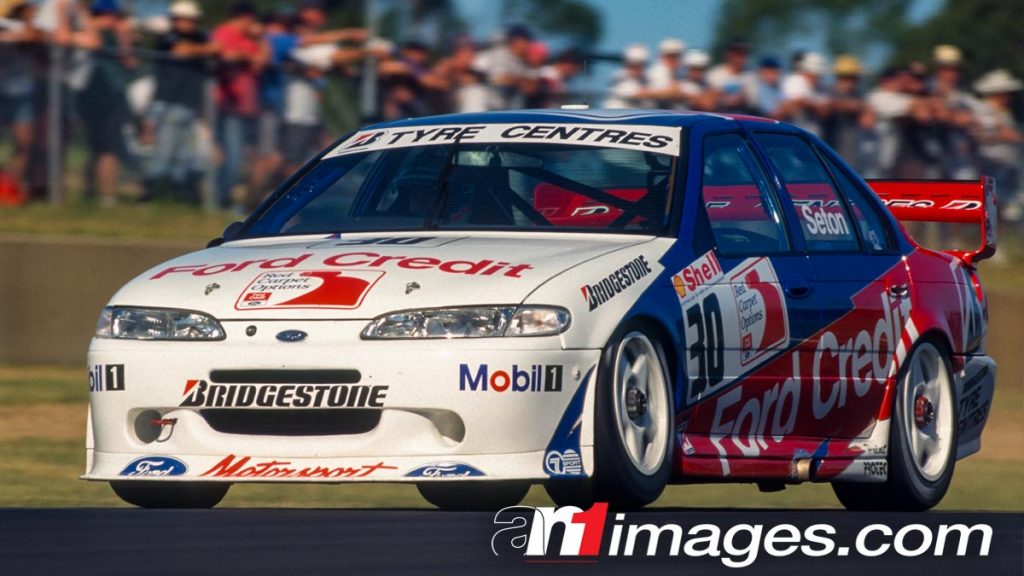
NEW LOOKS FOR THE POST-TOBACCO ERA
The banning of cigarette advertising for 1996 crippled two of the sport’s biggest teams.
Glenn Seton Racing and Gibson Motorsport lost their respective Peter Jackson (Philip Morris) and Winfield (Rothmans) dollars, and both entered the new season as one-car teams.
Seton was able to secure backing from Ford Credit and Bridgestone, which was enough money to maintain GSR’s place at the pointy end – he’d win races in 1996 and the title in 1997.
No such saviour came Gibson’s way. Skaife campaigned a plain Commodore in the early rounds of the championship before the addition of minor backing from Sega for the remainder of the year.
The team’s competitiveness waned and, with no major sponsor coming through in 1997, Skaife eventually left to drive for HRT.
However, the tobacco ban had an unintended consequence: the creation of one of the sport’s future superpowers.
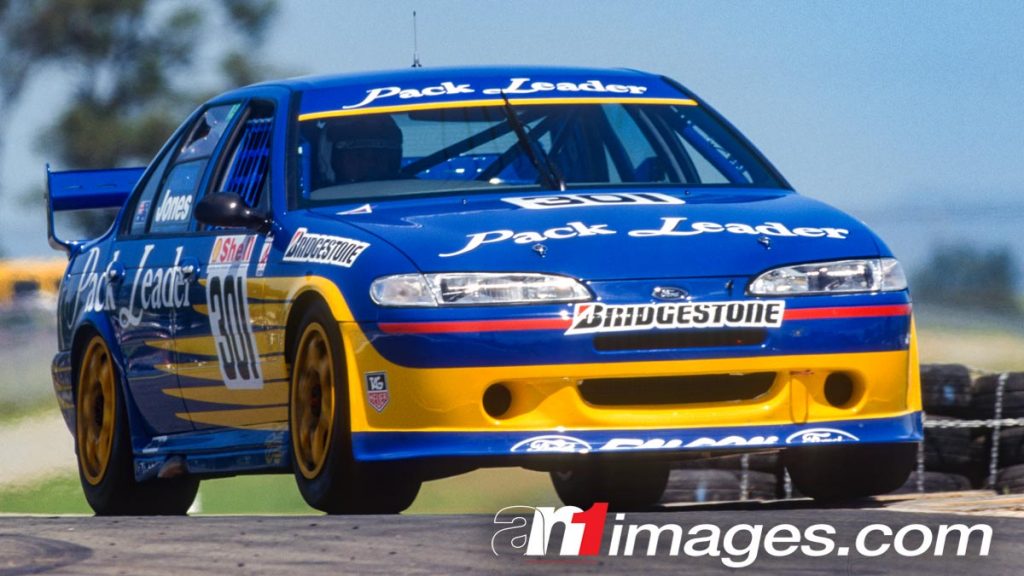
Founded by Alan Jones and run by brothers Ross and Jimmy Stone, the generically named Pack Leader Racing was the covert way Philip Morris continued to sponsor motorsport.
The arrangement lasted one season, and Jones eventually sold the team to Ross and Jimmy; Stone Brothers Racing went on to become one of the most successful teams of the next decade.
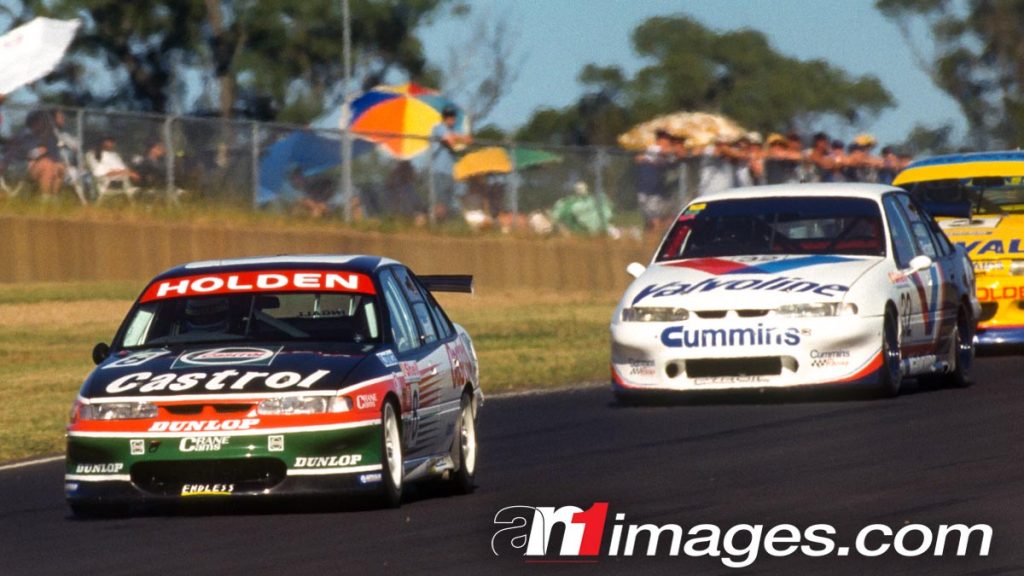
THE OTHER BIG-NAME DEBUTANTES
Lowndes might have stolen the headlines, but also making their debuts were a couple of drivers who’d become major players in the championship in years to come.
Russell Ingall joined an expanded Perkins Engineering line-up, while Steven Richards raced an ex-Gibson Motorsport Holden for Garry Rogers Motorsport, which was also making its ATCC debut as a team.
THE EARLIEST SEASON START
The January 27 date of the Eastern Creek round holds a place in history as marking the earliest start to an ATCC/Supercars Championship.
With the Atlanta Olympic Games occupying Channel 7’s time and resources in the middle of the year, the ATCC’s 10 rounds were shifted to start and finish earlier; the Oran Park finale took place on June 16.
Factoring in Australian Grand Prix and Gold Coast Indy support races, the major touring car teams raced 12 times in the space of that 20 weeks.
The 1996 season proved the last for Seven as a the ATCC’s broadcaster; the creation of the V8 Supercars brand saw the championship’s TV rights move to Network Ten for 1997.
The championship has since returned to Seven twice: initially from 2007 to 2014, while 2021 marks the start of a new five-year deal in conjunction with Foxtel and FOX SPORTS.
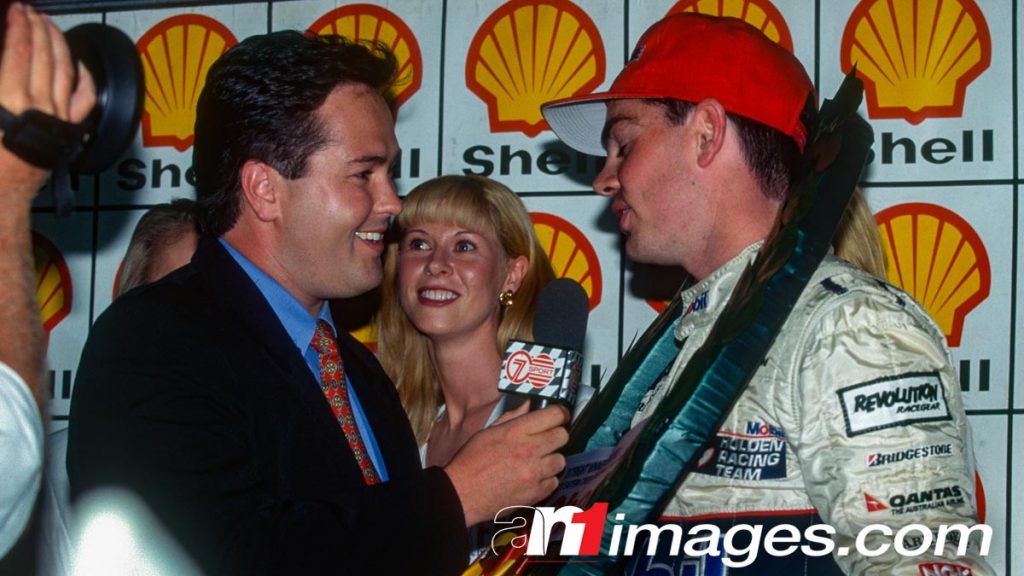
A BRAND NEW COMMENTARY LINE-UP
One of the biggest changes to affect the championship came in the commentary box.
Mike Raymond had been the voice of Australian touring car racing and the Bathurst 1000 for over two decades, but had been dumped by Channel Seven at the end of 1995 after a health scare.
Raymond’s son Andy spoke on the V8 Sleuth Podcast in 2020 about the decision and its impact on Mike, plus his own move into the booth as a result.
Andy had been the broadcast’s pit lane reporter for several seasons, but moved into the commentary team alongside Mark Oastler for 1996, while Brad Jones joined them to provide expert comments, and Garry Wilkinson returned as host.


